Strategic Procurement vs Strategic Sourcing: Key Differences


You’ve probably come across the terms strategic procurement and strategic sourcing more than once, but might not fully grasp what they mean or how they differ from each other.
Don’t worry, you’re definitely not alone—many people confuse the two and use them interchangeably.
But is that really accurate?
This article is here to clear up the confusion.
We’ll break down each concept separately, compare them, and then help you figure out which one can truly boost your business’s success.
Let’s dive right in!
Strategic procurement is the business process of acquiring necessary goods or services at the best possible price and quality, while also ensuring timely delivery to meet customer demand or maintain operational efficiency.
Plus, unlike traditional procurement—which primarily emphasizes short-term cost reduction and deals only with immediate needs—strategic procurement aligns with broader company goals and reduces supply chain risks.
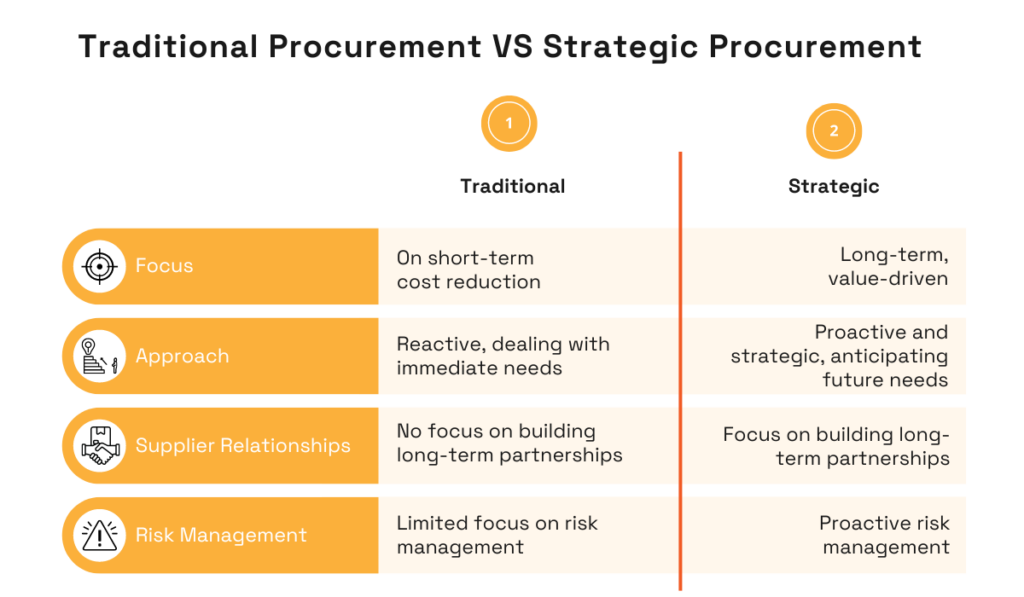
Source: Veridion
Essentially, this approach to procurement is far more value-driven.
Yes, it aims to minimize expenses.
But it also integrates with general business strategies, collaborates with other departments, builds strong supplier relationships, and proactively manages potential problems.
As such, it’s a somewhat complex process, consisting of the stages outlined in the illustration below.
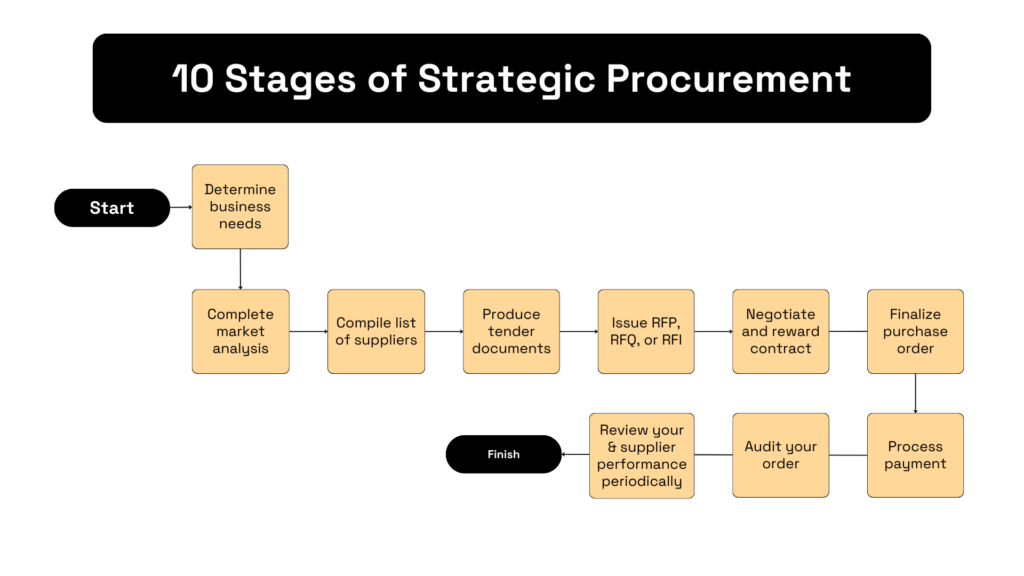
Source: Veridion
As you can see, the whole thing doesn’t really end when the ordered items are received, inspected, and stored.
Regular audits, supplier performance monitoring, and constant tweaks are a must to ensure that any issues are nipped in the bud, and opportunities for improvement are identified on time.
But, why go to all this trouble, you ask?
The more obvious reasons are:
However, strategic procurement goes even further than that, adding value that impacts the business reputation and supports its core values.
Paul Bestford, CPO at a top UK retailer John Lewis Partnership, would definitely agree.
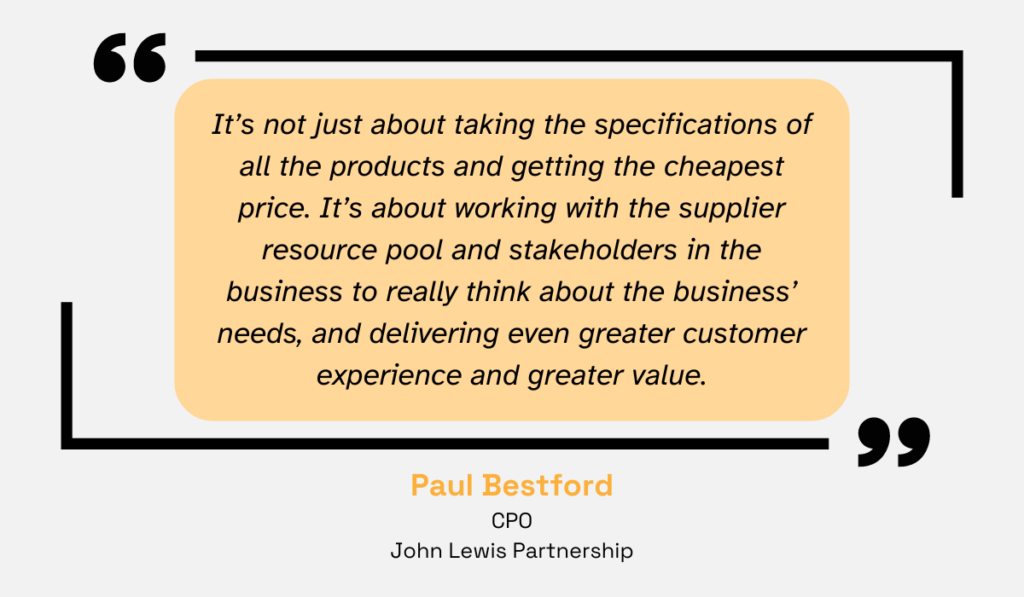
Illustration: Veridion / Quote: Efficio Consulting
He explains that, as soon as they restructured their procurement department to adopt a more strategic role, they saw an improvement in customer experience and store visits.
They’ve moved away from simple cost-cutting and now invest more time and energy in building solid relationships with suppliers to ensure consistent product quality.
This is what ultimately enables them to maintain customer trust and satisfaction.
Another example of strategic procurement supporting organizational objectives, philosophies, and success comes from Accor, a multinational hospitality giant.
For them, procurement is the key to driving positive environmental impact and promoting sustainable practices.
Caroline Tissot, Accor’s CPO, elaborates.
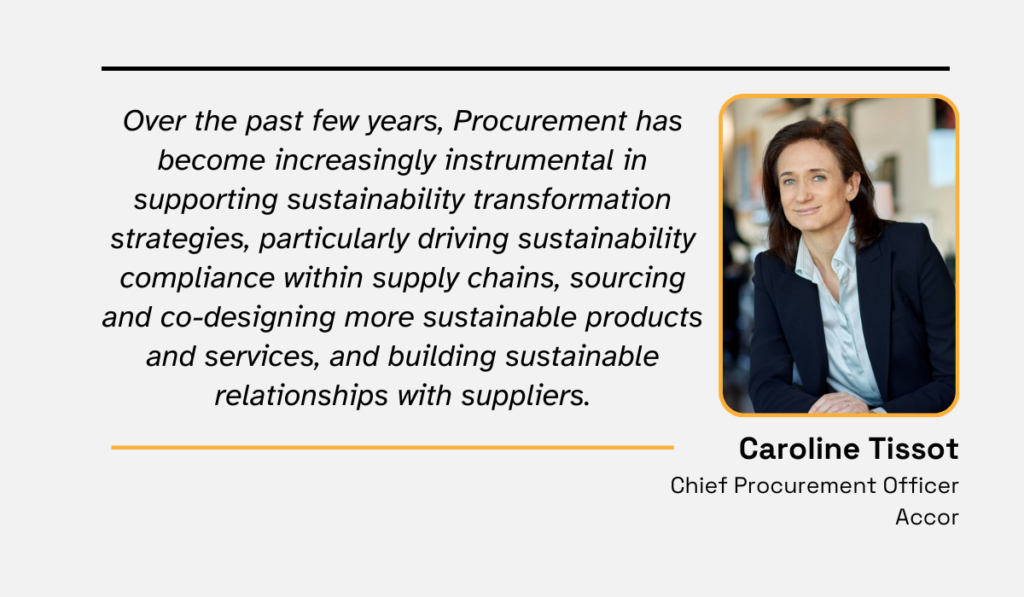
Illustration: Veridion / Quote: Hospitality Net
Ultimately, Astore, their procurement organization, helped 84% of hotels eliminate 46 types of single-use plastics, source more food locally, collaborate with sustainable suppliers, and so much more—something they’d never be able to achieve through traditional purchasing.
So, in a nutshell, strategic procurement isn’t just some back-office function that tries to cut costs as much as possible.
Instead, it’s a critical partner that propels companies ahead of the competition, boosts their reputation, and brings them closer to achieving their goals.
In the simplest terms, sourcing is the process of identifying, evaluating, and engaging suppliers of goods and services.
Strategic sourcing shifts the focus from mere cost savings to finding suppliers that will be reliable partners for a business down the line.
That’s where it differs from traditional sourcing the most.
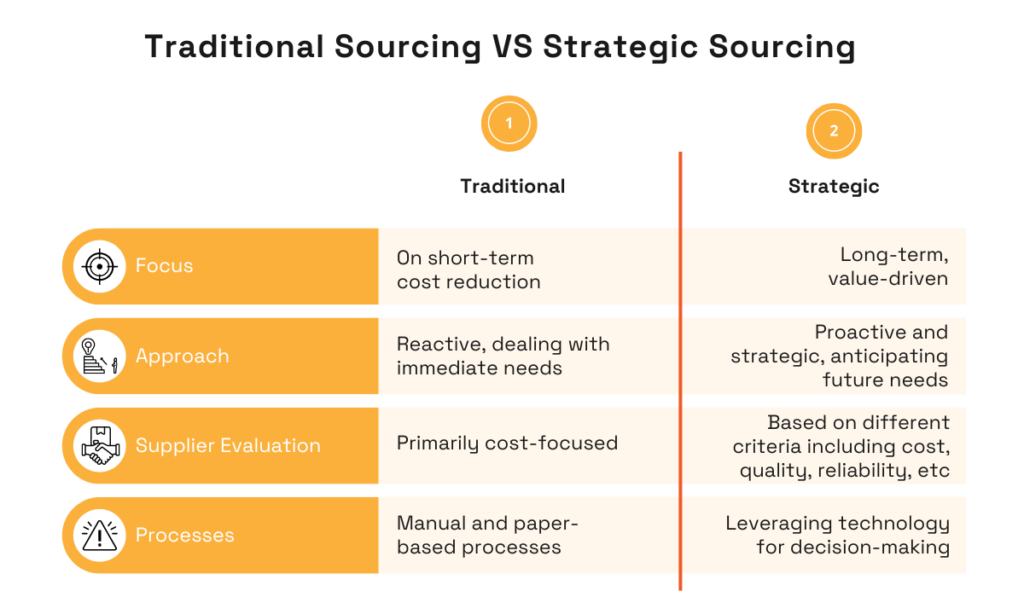
Source: Veridion
Traditional sourcing always prioritizes suppliers who offer the lowest price, focusing on quick wins over long-term benefits.
Supplier evaluation in this context is often pretty limited and price-centric, too, relying heavily on manual, paper-based processes.
Strategic sourcing, on the other hand, doesn’t pick suppliers only based on price tags.
Rather, it puts them through a rigorous vetting process that evaluates their reliability, innovation, quality, and how well they fit a company’s strategy.
The goal?
To transform these suppliers into long-term partners who contribute to the company’s success.
To achieve this, procurement professionals who prioritize strategic sourcing often use advanced digital tools like supplier relationship management software or supplier sourcing platforms.
Veridion is a prime example of such a platform.
This AI-driven sourcing tool accesses a global database with over 60 data points for more than 80 million companies worldwide, allowing users to set their own criteria—including ESG factors— and generates a shortlist of potential candidates in mere moments.
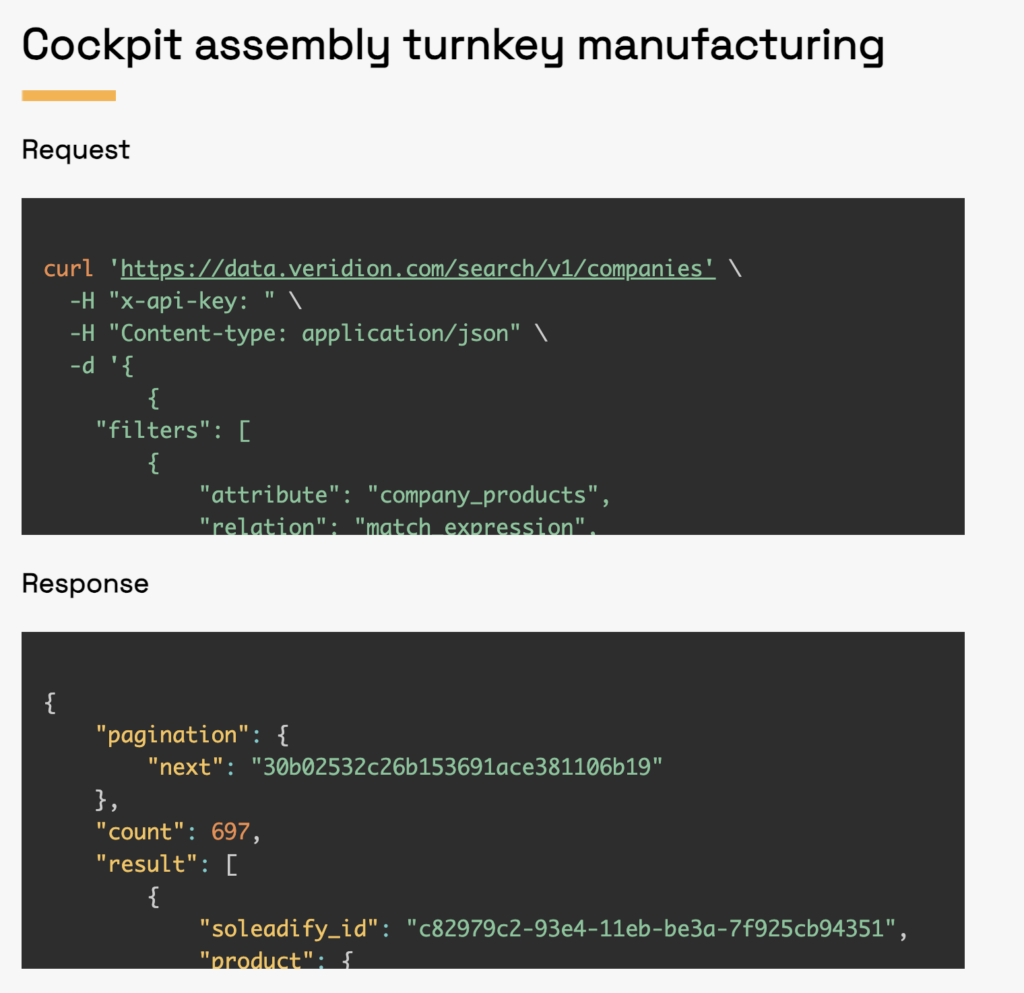
Source: Veridion
Plus, Veridion’s analytics tool also helps continuously monitor supplier data and alerts users to any detected risks, ensuring a proactive approach to supplier management.
At the end of the day, fresh, accurate, and detailed data is at the heart of strategic sourcing, and solutions like Veridion deliver that data quickly and without any hassle.
Strategic sourcing is a complex, multi-step process, just like strategic procurement.
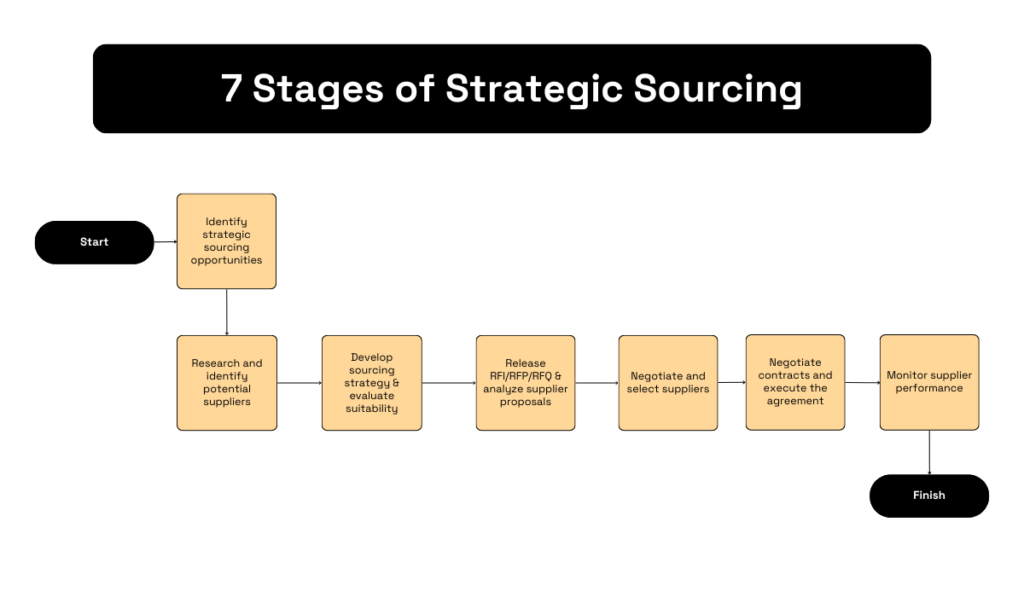
Source: Veridion
It carefully considers both current and future business needs, thoroughly evaluates candidates, and only then moves on to negotiations, which aim for mutual benefit rather than securing wins for one party.
Such an approach to sourcing is important, not just because it helps businesses unlock better prices or services, but because of something far more valuable: supply chain resilience.
Supply chains today are notoriously volatile, with disruptions like shortages, pandemics, or political conflicts posing serious threats to organizations, no matter their size or industry.
Partnering up with the right suppliers can help prevent these issues or at least soften their impact.
Just take, for instance, Jabil, an American multinational manufacturing company, and Vishay, their supplier of various electronic components.
According to Jabil’s website, Vishay has been instrumental in their operations, providing advice, assisting with future planning, and keeping Jabil informed of the latest trends:
“Vishay advises Jabil on where we may want to upgrade components to provide lower cost and more readily available components. This helps us weather disruptions and better serve our customers when the market tightens up, like in the case of component shortages and COVID-19.”
This partnership has enabled Jabil to mitigate risks, minimize disruptions, and continue growing.
Strategic sourcing is all about creating these kinds of partnerships.
It’s about finding suppliers who aren’t only cost-effective but who stand by you through thick and thin, helping you navigate challenges, seize opportunities, and reach your full potential.
Reading this article, you may have noticed some overlap between strategic procurement and sourcing.
You’re not mistaken—sourcing is indeed a part of procurement.
This is probably why many people confuse the two terms and often use them interchangeably.
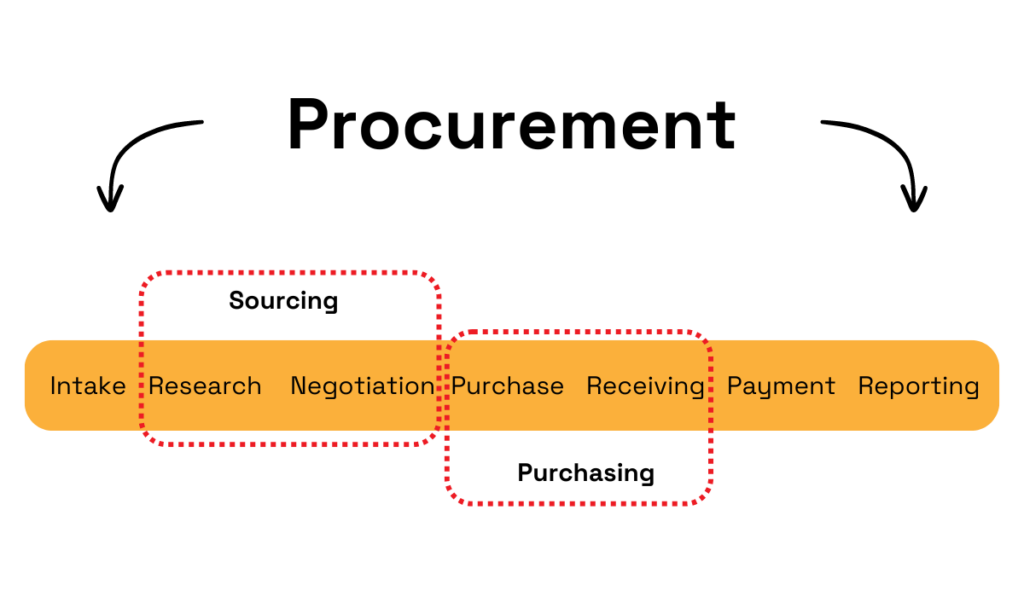
Source: Veridion
Nevertheless, they do represent distinct concepts and processes, differing not just in their definition but also in scope, objectives, activities, and complexity.
Let’s break it all down.
For starters, strategic procurement is much broader in scope, as it includes sourcing alongside various other tasks and procedures.
It encompasses everything from needs assessment and order processing to goods receipt and payment management.
On the other hand, sourcing is focused primarily on identifying reliable suppliers and cultivating strong relationships with them, making its scope somewhat narrower.
Its activities are all supplier-based, including supplier research, evaluation, negotiation, and contract management.
| Strategic Procurement | Strategic Sourcing | |
|---|---|---|
| Scope | Broader in scope, spanning the whole procurement lifecycle | Narrower in scope, encompassing supplier selection and management |
| Objective | To ensure procurement and broader business goals are met | To find the most cost-effective and efficient suppliers |
| Activities | Needs assessment, PO creation, payment processing, order receipt, performance monitoring | Supplier research, negotiation, evaluation, contract management |
| Duration | Long-term activities and strategies that can take several months or even years | Typically follows a faster cycle than procurement as a whole |
Think of it this way:
Strategic procurement does everything to make sure the company secures the right products at the right time and place, achieving optimal price and quality while proactively managing risks and aligning with overarching organizational goals.
Strategic sourcing, then, focuses on finding suppliers that can help make all that happen.
Now, why does distinguishing between strategic procurement and sourcing even matter?
The answer is simple: to excel at both.
Failing to recognize their unique roles could mean neglecting vital aspects of either process.
For example, you might fail to allocate enough resources to each, overlook some crucial regulatory requirements, or miss out on opportunities for improvement within certain procedures—all potential pitfalls if these distinctions aren’t clear to you.
Plus, if you don’t understand the difference between the two, you just might create a confusing situation like the one the Redditor in the screenshot below encountered.

Source: Reddit
That’s right: understanding key procurement processes and definitions is a must if you want to ensure effective communication with both internal and external stakeholders.
It ensures everyone knows what to expect, which leads to smoother workflows, better coordination, and improved operational efficiency.
The bottom line is this: while strategic procurement and sourcing are interconnected, they are definitely not one and the same.
In fact, each demands dedicated attention, resources, and effort to achieve the best procurement (and business) outcomes possible.
Let’s elaborate on that.
The short answer?
Yes.
If you want to access top-tier products or services at optimal prices, effectively manage your supply chain, mitigate risks, and maximize supplier relationships, you simply can’t afford to neglect either strategic procurement or strategic sourcing.
Strategic procurement overlooks and manages all procurement activities, ensuring they align perfectly with your organization’s broader goals.
And guess what?
This isn’t some sort of trend by any means, but a proven path to achieving unprecedented business success.
One CEO of a chemicals company interviewed by McKinsey & Company echoes this sentiment:
“These days, to perform well, companies need a different end-to-end view of the business. Procurement is absolutely critical.”
So, yes, you really do need strategic procurement because it’s the key to getting your business where you want it to be.
It centers around the organization’s core values, objectives, and targets, and then finds the most effective way to achieve them, no matter what.
Its motto could well be: immediate cost savings are great, but long-term wins for the whole business are even better.
Little wonder then that a large number of companies, per the Amazon Business 2024 State of Procurement Data Report, are starting to increase their procurement budgets.
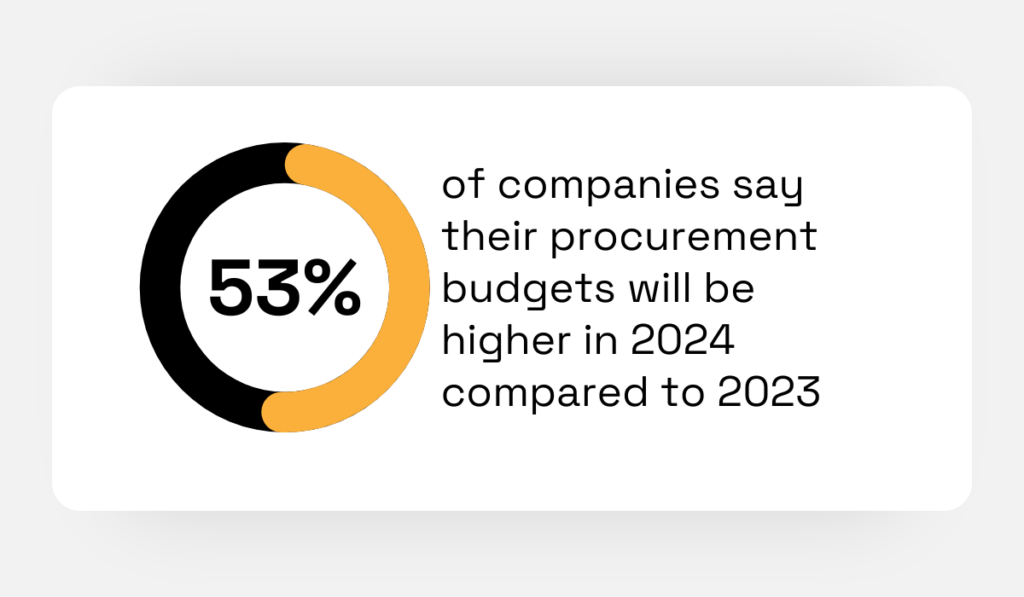
Illustration: Veridion / Data: Amazon Business
And who could blame them?
Investing in strategic procurement means investing in agility, organizational resilience, risk prevention, and long-term competitiveness.
But remember: strategic sourcing has an equally crucial role to play in all of this as well.
It supports the overall procurement strategy by finding and managing reliable suppliers who will continuously drive value and cost efficiency.
As they say at Quandary Consulting Group, a business consulting firm, dependable suppliers are the backbone of efficiency and profitability.
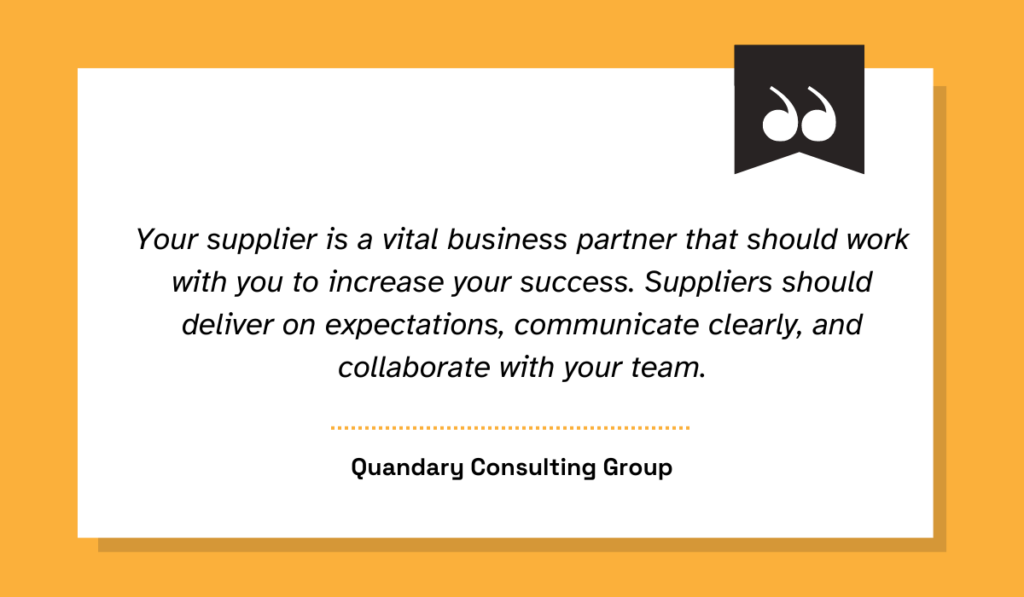
Illustration: Veridion / Quote: Procurement Magazine
If they don’t deliver, that can spell serious trouble for organizations.
This is where sourcing steps in, meticulously researching, evaluating, selecting, and then monitoring the key vendors.
Recognizing this, companies are starting to invest more in this area, too.
In fact, according to Deloitte’s 2023 Global Chief Procurement Officer Survey, strategic sourcing is the number one talent development investment area for many businesses out there.
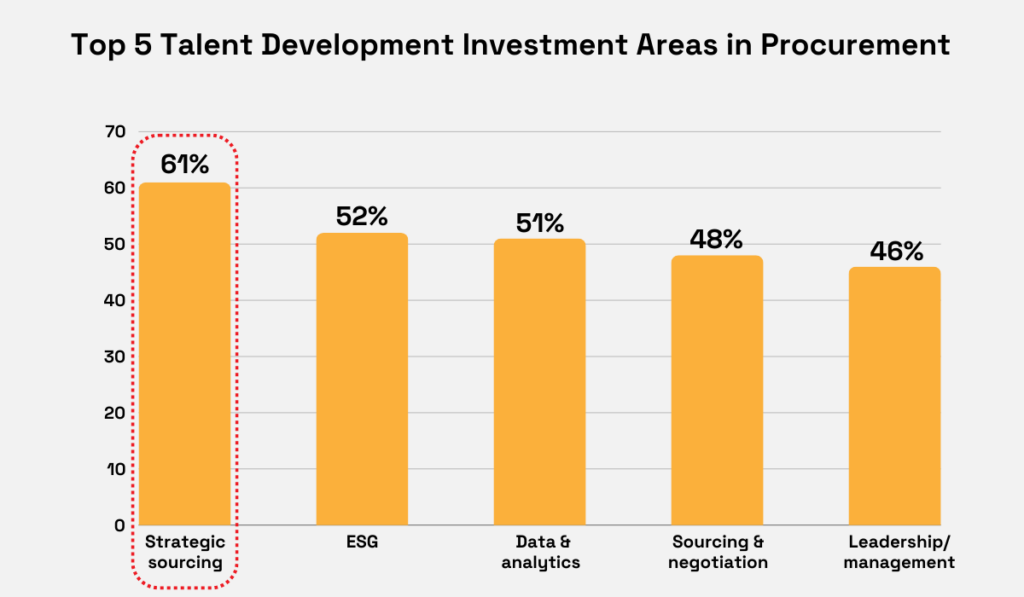
Illustration: Veridion / Data: Deloitte
This only goes to show that they really do understand how much of a game-changer smart sourcing can be, especially considering today’s unpredictable supply chain dynamics.
So, there you have it.
When strategic procurement and sourcing work hand in hand, they unlock unparalleled results across the board.
They don’t just tackle today’s challenges, but rather focus on future-proofing your business for sustained success.
And who wouldn’t want that?
As you can see, the difference between strategic procurement and strategic sourcing is quite straightforward after all.
Strategic procurement involves the overall process of acquiring goods or services, while strategic sourcing zeroes in on finding the best suppliers for those goods or services.
Still, despite their differences, both share key similarities: they’re both focused on long-term gains, consider broader company goals, and are crucial for staying competitive in the long run.
So, don’t hesitate to explore each concept further and see how they can be implemented within your organization.
You might be surprised by the levels of efficiency, cost-savings, and success they can help you unlock.